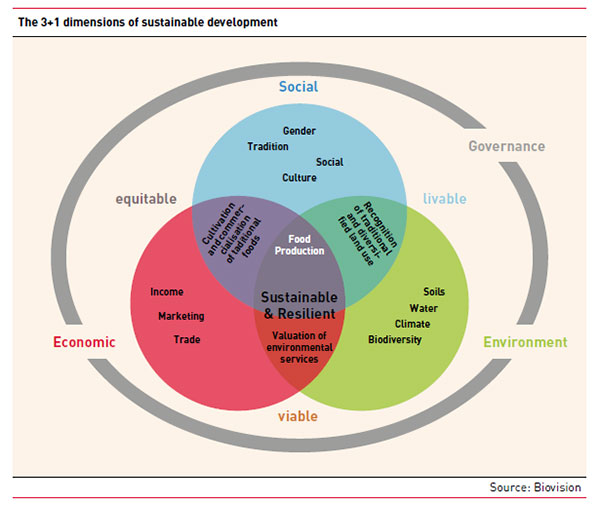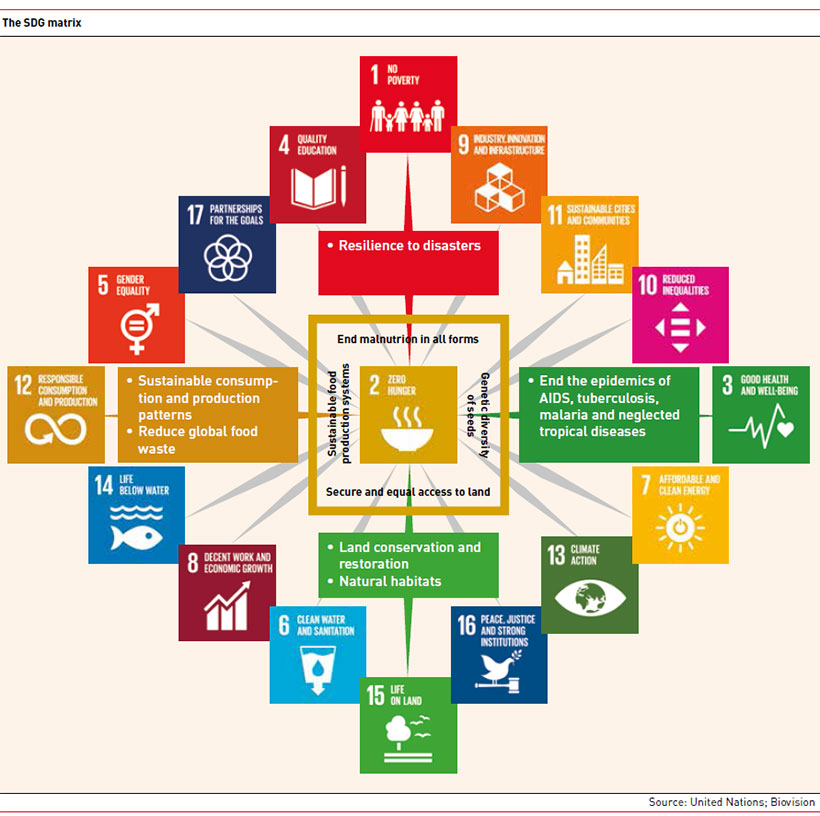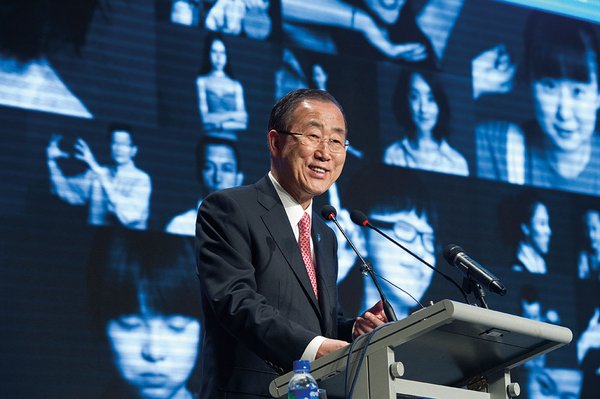 Download this article in magazine layout
Download this article in magazine layout
- Share this article
- Subscribe to our newsletter
IAASTD: From words to actions
The International Assessment of Agricultural Knowledge, Science and Technology for Development (IAASTD) series of reports (one global and five regional) were given the title of “Agriculture at a Crossroads”. This title describes in a very clear language the lead finding that business as usual is not an option when it comes to agriculture, food and nutrition security in the medium and long term. Its 400 authors, vetted by the Report’s Bureau of 30 governments and 30 civil society organisations, development partners and private sector representatives worked over a period of four years to produce this report, regarded by many as the International Panel on Climate Change report on agriculture. The reports, global and regional, provided options for action (several country and private sector representatives objected to the term “recommendations”) for the radical transformation of the present chemical-based industrial and conventional food and agricultural production systems towards agroecology, institutions, practices and policies with a strong justification based on the assessment of the present food system and its impact in the three sustainable development dimensions (environment, society and economy – see Figure). It is noteworthy to mention that the report’s findings were approved by 58 countries (not counting the UK, who did sign on after the final plenary meeting).

From Johannesburg to Rio+20
In 2008, when the final report was presented to the stakeholders, we were about midway of the Millennium Development Goals (MDGs), basically too late to influence them in a meaningful manner, not least because they were only applicable to developing countries, while the main issues with agriculture were global in nature. Also, given the cold shoulder the report received at the UN Food and Agriculture Organization (it was never officially presented to the member countries), the World Bank (who released its 2008 Annual Report on the agriculture topic just ahead of the IAASTD, thus undermining it), the Foundations that were instrumental in the development and promotion of the green revolution, and CGIAR, the NGO community took the initiative to keep the IAASTD report alive and bring it to the attention of decision-makers at every possible opportunity. The best occasion was being readied as the Agenda 2030, which had its debut at the Rio+20 Sustainable Development Summit (SDS) in 2012, ten years after the IAASTD was commissioned at the Johannesburg SDS. The NGOs went to Rio+20 as a strong group, with a document entitled “Time to Act”. It outlined a number of key issues that the NGOs wanted to see in the final Rio+20 declaration “The Future We Want”. After much negotiating and drama, the drafting committee did take into account many of the suggestions enshrined in the Time to Act document, and so these found their way into the SDGs.
The SDGs are not perfect, but given the obstacles thrown across agriculture and the food system transformation’s way, the world as a whole now has a framework universally agreed upon and actionable. Whichever way we do look at the SDGs, we need to regard them as a glass half full, and we can go beyond the set targets, or at least prepare the trajectory we need to be on post-2030. The road from “The Future We Want”, in particular paragraphs 111 and 115 and the many targets that are linked in a direct or indirect way to a reformed agriculture and food system to achieve them, was strewn with difficulties and a battle of the words, i.e. should it be “transition” or “transformation”? That the IAASTD options for action have been included, even if in a mild form, in the SDGs and give the framework needed for transformational policies to be implemented is probably the most important achievement.
Agroecology on the move
The repeated push by the NGO community and the United Nations Environment Programme (UNEP) to see the agriculture and food system transformation suggested by ISTAAD become a global reality is being challenged by the push in the opposite direction by the vested interests represented by the agro-industrial and conventional agriculture lobby. Agroecology (AE) is making progress despite these challenges. The best signs are seen at FAO, which has by now organised two international Symposia on AE as well as several regional ones (see also article "A pathway to achieving the SDGs"). Missing still is a North America Symposia, and perhaps a west European one. In the words of José Graziano da Silva, Director General of FAO, the cathedral of agriculture (FAO) has opened a window to AE … let’s hope that the doors will open soon, too. The last AE symposium held in early April 2018, may be symptomatic of what is happening regarding the transformation process. Out of over 700 participants, some 600 were from civil society groups, a remarkable success and a sign that AE has picked up momentum, a momentum that will continue given the need to achieve the SDGs, for which AE is unavoidable. Goal 2 is intimately linked to all other goals, and the synergies that can be created across the SDG matrix with AE practices are a necessity should one be able to meet the targets on time and within budget (see Figure). AE will also allow for huge savings, as it minimises the negative feedbacks, such as impact on climate change, health, biodiversity loss and water conservation, to name just a few.

When considering the seven key findings of the IAASTD report, multi-functionality, focus on small-scale farmers, damage caused by industrial agriculture, ecological resilience through agroecology, food security, fair trade and food democracy, one realises that these are now very much part of the transformation conversation – which is not surprising, as they are also within the main tenets of AE.
The discussion now held on what may well be a key leverage point in support of the transformation is true costing. The industrial/conventional agriculture and food system model relies for its success on the externalisation of environmental health and social costs, thus making its products appear relatively cheap, compared for example to organically produced foods. The exponentially growing health and environmental costs and the social hardship and inequity left in the wake of the industrial and conventional agriculture model are standing in the way of achieving the SDGs and are thus becoming points of interest for policy-makers and development experts.
Where to from here?
The domino piece that represents the industrial and conventional agriculture and food system model is shaking seriously, and it’s now up to the AE supporters to make sure it has a knock-on effect on the long line of global destruction domino pieces. Agro-industry is now rapidly co-opting AE terms while cloaking the old practices in new slogans such as climate smart agriculture, sustainable intensification, green revolution 2.0 or double green revolution. These terms cover the same old practices that make farmers dependent on chemical and genetically manipulated inputs, negate or destroy ecosystem services, eliminate much-needed biodiversity and still contribute to climate change instead of being part of the solution (see also article "Agroecology – the most convincing proposal for transforming unsustainable food systems").
It is therefore important that the options for action outlined in the IAASTD report be taken seriously and implemented in the SDG framework, from AE in the field to institutional changes. The knowledge, science and technology for such a transformation is available now, and while more R&D is needed (see article "More inter- and transdisciplinary research is needed in agroecology"), AE can easily produce sufficient, good quality and culturally appropriate food for all. To further support the transformation, it would be important to better understand the political economy of the food systems, as well as the money flows that are shaping it. A recent report from the International Panel of Experts on Food Systems entitled “From Uniformity to Diversity” highlighted eight key blockages that keep the industrial and conventional agriculture and food system in the status quo. From path dependency, i.e. the green revolution model to cheap food and export orientation, the report makes the case, in the footsteps of the IAASTD, for a systemic transformation. The present efforts regarding true costing are an example of a move in the right direction, which also can be traced back to the IAASTD report, as many of the conversation topics that are or will be shaping the discourse and actions around the implementation of AE on a global scale.
After ten years of efforts by many organisations and individuals, the main options for action outlined in the IAASTD report are seeing the light of day. It is certainly rewarding for the IAASTD report authors and supporters to see that, even if with a delay and a lack of speed, transformation is taking place, both in the field and at the ministries, and also in the UN Agencies and among multilateral and bilateral development partners. As we look ahead, we need to ensure that the transformation process adheres to the AE principles and keep an eye on co-option of terms without the intent for comprehensive, holistic and systemic implementation, so our work for the next decades is well cut out. There is also an ongoing discussion regarding the establishment of a permanent panel or convention like the IPCC for agriculture … nothing new, since we had proposed this at the final plenary of the IAASTD, but it was killed before seeing the light of day with the excuse that we did not need yet another UN organisation in addition to the FAO and the Committee on World Food Security, among others.
The difference is that what we had proposed back then would have produced updated IAASTD reports, say every five years, fully integrated reports rather than a flow of disconnected High Level Panel of Expert reports that do not address the systemic nature of agriculture and the food system in its widest sense. They are the subject of negotiation with member states, instead of being scientific.
Hans R. Herren is President of the Millennium Institute Washington, Founder and President of the Biovision Foundation for Ecological Development, Zurich, Switzerland and co-chair of the IAASTD report.
Contact: d.fritz@biovision.ch





Add a comment
Be the First to Comment